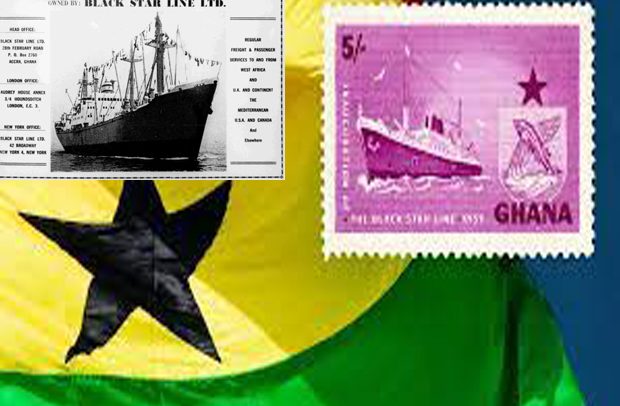Good economic reasons informed the decision of the Prime Minister to establish the iconic Black Star Line shortly after independence.
At its inception, there was no denying the fact that here was a promising state venture which besides the economic gains it was going to visit on the newly independent country, it would also ensure technology transfer and provide employment to citizens of this country.
Unfortunately, like other state ventures, the Black Star Line could not endure the mismanagement which soon set in.
The name Black Star Line was not an original coinage, the moniker having already been used by African American Civil Rights leader Marcus Garvey for a similar venture in 1919.
His vision was to link America, the Caribbean and Africa through a shipping line. He intended this to also boost tourism among people of African descent.
It is instructive that like Kwame Nkrumah’s Black Star Line, Marcus Garvey’s suffered from mismanagement, thievery and sabotage.
The foregone notwithstanding, the company remained afloat until 1922 when the curtains were drawn over it.
The docking of ships under the Marcus Garvey’s Black Star Line at the ports of call were moments of excitement and pride among black people.
Some forty decades after the original Black Star Line stopped sailing, Kwame Nkrumah decided to name Ghana’s after it.
The name marched the black star in the middle of the country’s new flag of Red, Yellow and Green.
At its inception, the line was scheduled to operate between Ghana and European ports, conveying to the country machinery, cement and others and moving local produce such as cocoa beans to European countries.
At the end of October 1957, Ghana’s first vessel of the national shipping line the Black Star Line was named SS Volta.
The ship cost two hundred and fifty thousand pounds, the transaction for which was preceded by Mr. W.Q.M. Halm, President of the Black Star Line, scrutinising its details at Lloyds, the international register of ships.
Mr. Simon Wertheimer was General Manager of the Black Star Line.
Fourteen Ghanaian seamen flew to the United Kingdom to join the ship which was billed to convey some cargo on its maiden voyage to Ghana.
The offices of the new shipping line were located at the Ministry of Trade and Development to its new premises opposite the School of Hygiene on Station Road in Accra.
The Black Star Line was the outcome of an agreement between the Ghana Government and representatives of Zim, the Israeli National Shipping Line in September 1957, with an initial capital of five hundred thousand pounds.
The Black Star Line made progress quickly and by January 17, 1958 acquired four more vessels.
MV Dagan, a 7,150 ton ship was one of the new acquired vessels under a charter arrangement.
The other three were SS Tsfonit, MV Yehuda and MV Kronoborg. This raised the number of ships in the fleet to five.
MV Volta returned home from Lagos in the third week of January 1958. She loaded cocoa beans for a voyage to Europe.
SS Tsfonit joined the fleet to make her first voyage to Europe having sailed through Freetown, Sierra Leone. The MV Yehuda was especially crafted for West African trade bearing accommodation for twelve passengers. She arrived Ghana in February 1958 and was joined by her sister ship MV Dagan.
The Tsfonit was replaced by MV Galida.
SS Volta left Liverpool, England, in late November 1957, and arrived at Takoradi Harbour in early December.
With growth, Black Star Line vessels sailed to North America and around the Mediterranean.
Things started to change negatively; trade volumes not justifying the vessels in the fleet.
The situation informed the selling of the vessels and exchanging its four ships for smaller ones in 1993.
A few years after the 1966 putsch, the Black Star Line was hit by corruption and maladministration; final blows which knocked it off the business scene.
Vessels like Keta, Tano and Sissili whose flying of the national flag was a source of pride for Ghanaians in the 70s were soon confined to the chapters of the country’s maritime history.
By A.R. Gomda


